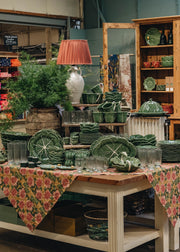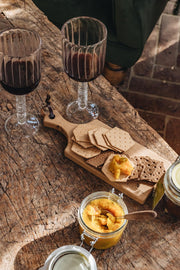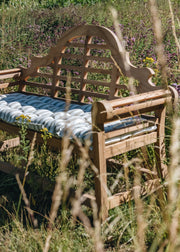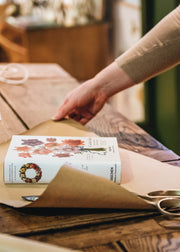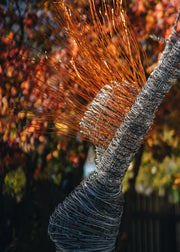Our Glossary
AGM
RHS Award of Garden Merit
Annual
Plant that completes its life cycle within one growing season, then dies.
Aspect
The compass direction to which the plant's habitat is exposed
Biennial
Plant that takes two years to complete its life cycle
Bolting
Also known as 'going to seed', when possibly a temperature change causes a vegetable plant to produce flowers prematurely
Bract
Part of the plant structure. Leaflike, and positioned beneath a flower, usually to aid the reproductive structure
Bud
A pointed lump that develops into a leaf or flower
Bulb
A ball like root from which some plants grow, e.g. tulips and daffodils
Cane fruits
Berry bushes classified as cane fruits include blackberries and raspberries
Chitting
Process of allowing potato seeds to form small roots before planting
Chlorosis
A condition where leaves begin to yellow due to insufficient chlorophyll
Clumping
Term to describe plants that spread slowly to form a cluster of new plants
Cold Frame
Outdoor structure that protects young plants
Companion Planting
Natural method of pest prevention or other beneficial side effects by planting certain plants next to or around one another
Cordon
Method of training plants on single stem
Cottage Garden
A style of gardening, originating in England, that uses informal design, dense planting and a mixture of ornamental and edible plants
Cultivar
Cultivated variety
Cultivating
Act of raising, caring for and breeding plants
Dead-head
Removing spent blooms from flowers, in an effort to induce the plant to produce more
Deciduous
Plants that drop all of their leaves every autumn/winter
Die Back
Progressive death of twigs, shoots and branches from the tip downward, sometimes caused by disease
Drill
A shallow trench made using a dibber or trowel for sowing seeds or bulbs in rows.
Epiphyte
A plant that grows on the surface of another plant e.g. orchids growing while attached to trees
Ericaceous
Acidic, in reference to soil type
Espalier
Trees (usually fruit) grown on a flat frame
Established
The point at which a newly planted tree, shrub or perennial begins to produce new growth
F1 Hybrid
First generation hybrid after successful cross pollination of one genetically uniform plant with another
Fastigiata
A tree or plant with branches growing parallel to the main stem or trunk
Fenestration
Natural splits and holes in leaves e.g. the houseplant variety Monstera, or Swiss Cheese Plant
Forcing
Inducing a plant to produce fruit at unnatural times of the year
Galanthophile
Collector of snowdrops
Germination
The sprouting of a seed into a seedling
Grafting
Placing a portion of one plant into the stem or root of another, so that they continue to grow together
Harden Off
Gradually introducing plants raised indoors into the outdoors
Herbaceous
Perennial or biannual plants that have no persistent woody stems above the ground
Lime (soil)
By liming the soil, one raises the pH and keeps it at the correct level for plants to survive. (applicable to ericaceous soil)
Mulch
Material such as decaying leaves, bark or compost spread over a plant to enrich or insulate the soil
Naturalising (bulbs)
Naturalising is the process of planting a bulb and leaving it to self-seed or propagate naturally in one position to form larger clumps over the course of several years. Some bulbs naturalise more easily than others, such as snowdrops, crocuses, bluebells and narcissi.
NPK
Ratio for fertiliser:
- N: Nitrogen
- P: Phosphorus
- K: Potassium.
Each benefits the plant in different ways:
- N: leaves and shoots
- P: roots, fruits and flowers
- K: overall growth.
For example, if you wanted more tomatoes on your tomato plant, you would choose a fertiliser with a high ratio of phosphorous and potassium
Over-wintering
Protecting plants over the course of the winter to ensure their survival into the next growing season
Perennial
Plants that live for many growing seasons and years
Pinching Out
Method of pruning for young plants to encourage branching, by pinching off the top of the stem
Pollination
Transfer of pollen between plants for fertilisation
Pot On
Transferring a plant from a smaller pot into a larger pot
Pot Up
Transferring a small plant or seedling into a container to continue growing
Pricking Out
Separating out seedlings that are growing together, and transferring them into their own pots
Pruning
Cutting back a plant to improve its shape and encourage growth
RHS
Royal Horticultural Society
Root bound
When roots fill the pot or planter, leaving no room for them to expand (also known as 'pot bound')
Root rock
A condition where larger plants such as shrub roses can become unstable in the ground and become prone to falling over in high winds due to large top growth. Can be avoided by pruning plants in the winter to reduce their size.
Shrub
Small or medium sized perennial woody plant
Standard
Plant that has been pruned in a stylised way to appear as a single stemmed plant. Often used for shrubs such as holly and bay.
Variegated
Leaves that show more than one colour, usually two. Sometimes can be caused by rare genetic mutations.
Watersprouts
Thin, spindly branches originating from growth nodes on trees and shrubs. Often need to be pruned away as they are a drain on nutrients and water, and rarely produce fruit and can divert growth away from the main plant.




